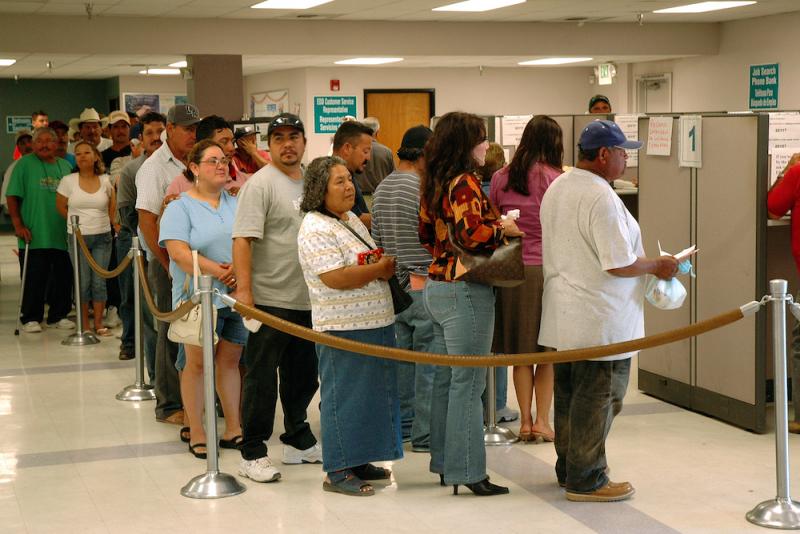Achieving universal resilience to the impacts of climate change and other multi-hazard risks will not be possible with limited financial resources. The role of economics is increasingly recognized as being critical for advancing the resilience of households, businesses, and local governments, and also for the broader economic adaptation of entire regions.
Economic resilience tools—usually referred to as strategies for managing risks and costs—represent an opportunity to create value through co-benefits across public, private, and civic sectors. Whether addressing business continuity and organizational capacity or broader issues relating to economic development, emerging resources can assist a range of actors in conceptualizing a strategy to promote their capacity for economic resilience and adaptation.
Economic resilience
Establishing economic resilience in a local business or a regional economy requires the ability to anticipate risk, evaluate how that risk can impact key economic assets, and build a responsive adaptive capacity. Often, shocks or disruptions to the economic base of an area or private enterprise are manifested in three ways:
- Downturns or other significant events in the national or international economy that reduce demand for locally produced goods and consumer spending;
- Downturns in particular industries that constitute a critical component of a region’s economic activity; and/or
- Other external shocks, such as a natural or man-made disaster, closure of a military base, exit of a major employer, or impacts of climate change.
At the regional or community level, economic development practitioners can build capacity for economic resilience. These individuals and groups often become the focal point for post-incident coordination and information dissemination. They may also function as grant administrators for federally funded recovery initiatives.
Planning for and implementing resilience
To build their resilience to natural disasters or economic downturns, communities and organizations must be able to recognize their vulnerabilities. Informed by analyses of a range of potential threats, communities can develop goals, strategies, and actions to mitigate the effects of economic incidents and support long-term recovery efforts.
While no universal blueprint for building economic resilience exists, the following strategies may help communities develop a general framework or identify useful activities:
Identify and mitigate persistent economic challenges or deficiencies: Consider the community’s economic “weak spots” or vulnerabilities over a planning horizon of 10 to 15 years. Does the region have a specific deficiency that limits the community’s ability to attract and support viable commerce? Deficiencies may include a poorly educated workforce, excessive dependency on a single employer or industry, lack of transportation options, low levels of broadband availability or adoption, or limited access to financial resources required to advance businesses.
Prepare for disruptions by monitoring early-warning tools: Does the region or business have an anticipatory focus that will help it react quickly when disruptions and challenges arise? Do community economic development professionals work with their local and regional emergency managers to address the risks identified through hazard mitigation planning? Do community leaders use mechanisms—such as scorecards, state of the region reports, or economic dashboards—that provide a regularly updated assessment of the regional economy?
Build mechanisms that create flexibility: Do local agencies and businesses have detailed and tested disaster response and recovery plans? Do they have business continuity or supply chain adaptation plans, or access to flexible credit resources? Does the region work to identify emerging economic sectors that could lead to a diversified economic base? Has the region established mechanisms to realign and retrain its workforce after a disruption?
Promote a positive vision for the region: Is the messaging about the region’s assets and opportunities positive? Does it encourage investments in times of both tranquility and disruption? Do stakeholders understand that actions that build resilience are good for the regional economy, whether or not an economic shock occurs? Have they reached consensus on a set of actions they can take proactively? Are economic shocks used as an opportunity to re-envision or adapt the region’s economy?
Fiscal resilience
After a disaster, local and state governments are uniquely challenged to steer economies to stable ground even as they make plans to meet fiscal obligations relating to clean-up and recovery.1 To meet these diverse needs, local jurisdictions may be able to separate their financial modeling and forecasting capabilities under an organization-wide strategic framework for reserve and capital accounting. Successful instances of this strategy showed commitment to transparency in identifying, communicating, and broadcasting common goals, objectives, assumptions, and standards.
Fiscal responsibilities are increasingly addressed in federal resilience guidance and programming resources. Whether a jurisdiction receives a conventional hazard mitigation grant or has to deal with post-disaster debris removal, they will likely need to navigate the complexities of fiscal issues, from cash-flow management to capital budgeting. As bond markets develop greater sophistication in underwriting risks associated with climate change, state and local jurisdictions can benefit from incorporating resilience processes in their long-term fiscal planning.
Resilience and finance
As markets increasingly—and more accurately—price the risks of climate change, new and modified financial instruments reflect a new risk-return equilibrium defined in terms of uncertainty and variable time horizons. Instruments such as resilience and catastrophe bonds represent new models for making investments to mitigate risks and/or provide co-benefits.
A central challenge to resilience finance is quantifying the benefits from any given investment. New metrics and benchmarks are being developed to rationalize investment decision making. These developments are happening in the private sector, and the public sector is also formulating new stewardship guidelines for funding, including the development of protocols for cost-benefit analyses that work across agencies and programs.
The preceding text was excerpted and abridged from the Economic Resilience section of the U.S. Economic Development Administration's Comprehensive Economic Development Strategy Content Guidelines.
- 1. The Government Finance Officers Association, 2011. Building a Financially Resilient Government through Long-Term Financial Planning, 14 pp.
U.S. Central Intelligence Agency. Public domain, via Wikimedia Commons






